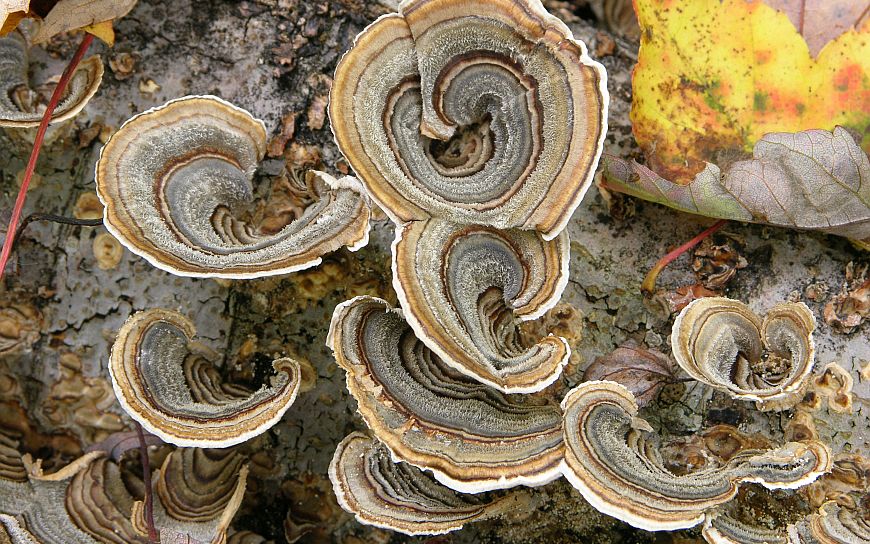FOCUS: Wood – a new discovery
Germs don’t stand a chance

Weather-beaten wooden façades on exteriors are often a sorry sight: gray with fungi, eaten away by bacteria, the handsome material loses much of its original splendor, which discourages many home-owners and building contractors from using wood as a construction material. And wood is also regarded as an absolute no-no in kitchens or nursing homes, where hygiene is paramount. This is because, as a natural material, wood is an ideal breeding ground for many pathogenic microorganisms.
Although wood varnishes or glazes can prevent an infestation, they frequently cause new problems as they often contain toxic substances. These pose a health risk during production and application, and can be washed out of the wood by rain or through wear and tear. Copper can get into the soil, for instance, where it pollutes the environment.
Biochemical processes
These enzymes – known as laccases – act as catalysts in their natural environment and ensure the oxidation of phenolic substances. In woody plants, for example, laccases are involved in the synthesis and breakdown of lignin, one of the main components in woody cell walls.
The researchers’ idea: in an “artificial” environment, the laccase obtained from white rot fungi is supposed to ensure that iodine is joined covalently – i.e. chemically “bound”. In an aqueous solution, the laccase oxidizes the iodide (Iˉ) to form highly reactive iodine (I2), which creates a bond with the lignin on the surface of spruce. “The advantage,” explains Schubert, “is that the chemically bound iodine can’t be washed out and is therefore permanent.”
The researchers have already patented the eco-friendly, simple and affordable application that doesn’t alter the wood’s haptic properties. They are now in talks with various partners from the furniture, construction and paper industry, who want to use the technique for their own purposes – whether it be to produce furniture with antiseptic surfaces for hospitals, provide wooden façades that are immune to bacterial and fungal infestations, or replace toxic binding agents for fibers in the production of paper.
Use at NEST
Two long-term tests with iodized wood are just getting underway at NEST, Empa and Eawag’s modular research and innovation building. Local fir and spruce is being used for the façade, while the door handles in the interior are made of oak. The wood is initially iodized with the aid of laccase from the fungus Trametes versicolor. The treated timber will then be exposed to everyday conditions for several years to give the researchers an idea of how bacterial and fungal infestations might be curbed or even prevented in practice.
But it doesn’t stop there: not only are laccase-catalyzed techniques just the ticket for iodizing surfaces; damping plates are also used at NEST, which were improved by Empa within the scope of a CTI project in collaboration with industrial partner Pavatex. They succeeded in reducing the synthetic binding agent before eventually replacing it completely with sustainable, environmentally friendly biopolymers thanks to laccase-catalyzed reactions.
Various areas of application
Further Information
Dr. Mark Schubert
Applied Wood Materials
Phone +41 58 765 76 24
Editor / Media contact
Martina Peter
Communication
Phone +41 58 765 49 87
Empa image gallery
-
Share


